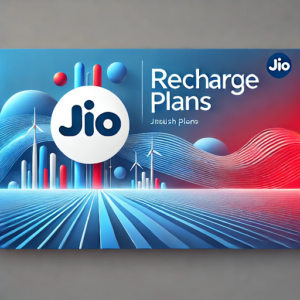
Privacy And Security: Twitter Blue New DM Limits Unfold
Twitter, the popular social media platform, has revealed its plans to impose limitations on the number of direct messages (DMs) that non-Twitter Blue users can send per day. This strategic move aims to combat spam and encourage more users to subscribe to Twitter Blue, the platform’s premium subscription service. In this article, we will delve into the details of these restrictions and their potential impact.
- Combatting DM Spam and Encouraging Twitter Blue Adoption
- Impact on Non-Blue Subscribers and Potential Challenges for Journalists
- The Rising Appeal of Alternative Platforms like Threads
Table of Contents
Twitter’s Drive to Boost Twitter Blue Subscriptions:
Twitter is taking proactive measures to encourage users to subscribe to Twitter Blue by implementing restrictions on DMs for non-subscribers. The primary objective is to combat the prevalent issue of DM spam which often inundates users with unwanted messages. This initiative aligns with Twitter’s recent update, restricting DM requests from non-followers to only verified users. By imposing these restrictions, Twitter intends to maintain a higher quality of conversations on the platform.
Effects on Non-Blue Subscribers:
While the exact limit for non-Blue subscribers remains undisclosed, it is unlikely to greatly impact the majority of users. This restriction primarily targets users who send an exceptionally high volume of DMs, sometimes veering into spam territory with counts exceeding 10 or 20 per day. Most regular users can continue unaffected, as they fall well within the expected usage limits.
Potential Challenges for Journalists:
For journalists, this restriction might pose challenges as DMs often serve as an essential tool for outreach and building stories. The limitations could hinder their ability to connect with potential sources and gather information efficiently. Nonetheless, it remains doubtful that this alone would drive journalists to subscribe to Twitter Blue, considering recent skepticism from influential voices within the industry towards Twitter’s owner, Elon Musk.
The Rise of Alternative Platforms:
The popularity of Meta’s alternative Threads app has recently surged, indicating a growing discontent among journalists with Twitter’s approach. Journalists, seeking an alternative space where trust and reliability are paramount, have been actively exploring Threads. With influential figures endorsing and sharing exclusive content on Threads, news consumers may gravitate towards this new platform.
Wrap-Up
Twitter’s decision to limit DMs for non-Twitter Blue users is a strategic measure to tackle spam and promote the adoption of Twitter Blue subscriptions. While the impact on regular users is expected to be minimal, it is crucial for Twitter to keep evolving its policies and guidelines to align with the evolving social media landscape. However, it is worth considering whether these restrictions might inadvertently drive users towards alternative platforms like Threads, which are gaining traction with influential voices within the journalism community.
Frequently Asked Questions (FAQ)
What is Twitter Blue subscription?
Twitter Blue is a monthly or annual subscription service offered by Twitter that provides exclusive access to app customizations and new features. Here are some of the features that Twitter Blue offers:
• Blue checkmark: Subscribers get a blue checkmark added to their account, which is a symbol of verification that shows that the account is authentic and belongs to a real person or organization.
• Edit Tweet: Twitter Blue subscribers can edit their tweets after they have been posted.
• Customizable app icon: Subscribers can choose from a selection of custom app icons to personalize their Twitter app.
• Advanced composer: Twitter Blue subscribers can use an advanced composer to create more complex tweets with up to four media items, such as photos, videos, and GIFs.
• Reduced ads: Twitter Blue subscribers see fewer ads on their For You and Following feeds.
• Priority access: Tweets from verified users are prioritized, which can help fight scams and spam.
Twitter Blue is an opt-in, paid subscription service that costs $8 per month if you subscribe through a web browser, or $11 per month if you subscribe through the iOS store on your iPhone. The service is available in several countries, and subscribers can manage their subscription on the platform they subscribed on
Why is Twitter imposing limitations on the number of DMs non-Twitter Blue users can send per day?
Twitter is implementing these restrictions to combat the issue of DM spam, which has been a prevalent problem on the platform. By encouraging users to subscribe to Twitter Blue, the premium subscription service, Twitter aims to maintain higher-quality conversations and reduce the volume of unwanted messages.
How will these restrictions affect non-Blue subscribers?
The exact limit for non-Blue subscribers has not been disclosed, but it is unlikely to have a significant impact on the majority of regular users. The restrictions primarily target users who send an exceptionally high volume of DMs, often crossing into spam territory with excessive message counts per day.
Are there any alternative platforms gaining popularity among journalists?
Yes, Meta’s alternative Threads app has seen a surge in popularity, particularly among journalists dissatisfied with Twitter’s approach. Threads offers a space where trust and reliability are emphasized, and influential figures within the industry have been endorsing and sharing exclusive content on this platform.
How is Twitter’s decision likely to impact the social media landscape?
Twitter’s decision to limit DMs for non-Twitter Blue users shows the platform’s proactive efforts to address spam and improve the user experience. However, it also opens up opportunities for alternative platforms like Threads to gain traction, especially among journalists seeking a more reliable and exclusive space for communication.
Is it necessary for users to subscribe to Twitter Blue to avoid DM limitations?
Yes, subscribing to Twitter Blue will grant users unrestricted access to DMs without any limitations. If users frequently use DMs for communication and want to avoid the restrictions, subscribing to Twitter Blue is a viable option.





